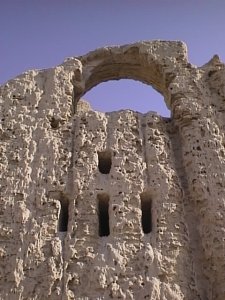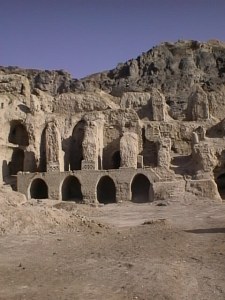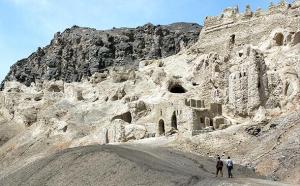Speaking with the Persian service of ISNA on Wednesday, Rasul Haj-Mousavi, the director of Sistan’ Cultural Heritage Base (SCHB) said: “the daily destruction of the unique Parthian site has become very serious. [Saving] the site should become a matter of concern for Iran Cultural Heritage and Organisation (ICHTO), and [its protection] should be considered as a national programme.”
Haj-Mousavi said the two main difficulties that SCHB is facing are, “ICHTO would not follow the SCHB’s recommendation, when comes to prioritising the sites in the province for allocating the necessary budget, and also the lack of manpower. SCHB is a very large archaeological base, with no manpower.”
He recommended the protection of Khuh-e Khwajeh should become the priority and called for allocation of the whole of next years budget to save the site.
He added “a strong team of experts needed to conduct necessary work including surveying, cataloguing and damage-studies, which should lead to a restoration.”
As a sign of protest, Haj-Mosavi has submitted his resignation to ICHTO a few months ago, which was turned down. He submits his resignation for the second time.

In June 2006, Mohammadali Ebrahimi, the director of Sistan and Baluchestan province’s Cultural Heritage and Tourism Department asserted that the area badly needs vegetation to neutralize the destructive impacts of the strong winds, which occur for four months of the year with speeds reaching 120 km per hour. Despite his warnings in August 2006 one of the eastern walls of the palace has collapsed.
While the Iranian heritage sites are in desperate need of funding in order to be rescued from total destruction, the Islamic Republic is spending billions of dollars of the Iranian assets every year in Palestine, Lebanon and Iraq. In June 2008, Iran Focus revealed that the regime spends $2.5B every year on activities in Iraq, in which a fraction of the money that is being spent for futile aims could be used to save thousands of heritage sites like Kuh-e Khajeh.
Historical Background (by Khodayar Bahrami):
Mount Khwajeh, also spelled Kuh-e Khajeh, Kuh-i Khaja, is a flat-topped black basalt mountain located 30 km southwest of the town of Zabol and is located on an island in the middle of Hamun lake, in the Iranian province of Sistan and Baluchestan.
The trapezoid-shaped basalt lava, situated 609 meters from the sea level, with a diameter ranging from 2.0 to 2.5 kilometers covering an area of 40,000 square meters, is the only natural height left behind the Sistan area. It is here we can find a citadel with palaces, fire temple, a pilgrimage centre and graveyard. Also there are number of small temples (possibly Mithraist or Anahit), known to the locals as the “Kouchakchal Ganjeh”.

The Kuh-e Khwajeh historical complex is one of the most significant archaeological sites in Iran and the biggest model of unbaked mud brick architecture remaining in Sistan region, which dates back to the Parthian dynasty (248 BCE-224 CE).
The ancient site was identified by A. Stein, E. Herzfeld, and was investigated in part by G. Gullini in a short expedition conducted in the 1960. According to his findings the palace and the fire temple were already in existence in the Parthian period. The ruins on the southern slope, dates back to 1st century BCE and it is still known as Kuk-u Kohzadh.
Stein also discovered a Buddhist monastery at Mth. Khajeh in 1916. Roman Ghirshman pointed out that the art of Mth. Khajeh predates Gandhara art which disproves the widely accepted notion that Buddhism spread from Nepal or Eastern India, and it claimed that Mth. Khajeh was Kapilavastu, the birthplace of Gotama.
Stein’s work clearly shows that Buddhism was born in Iran but was later nurtured in modern India, Afghanistan and Pakistan.
However, Khwajeh Mountain Complex is greatly respected by followers of the three faiths of Zoroastrian, Christianity and Islam and considered as a holy place. The mountain has been named after the mausoleum of “Khwajeh Mehdi”, one of the sympathizers of Alavi rulers, which is situated on this mountain, often referred under its Islamic name Kuh-i Ushida.

The oldest and by far the most important structure of the site is an ancient fortress found on the eastern slope, referred to under various connotations such as Rostam’s castle, the Kāferūn castle, Kohan-Dež, etc.
Unique murals decorated the walls of the fortress, few of which have survived. Recently, a complete documentation of the site was carried out. In addition, partial restoration and fortification of the castle were conducted on its walls and arches.

